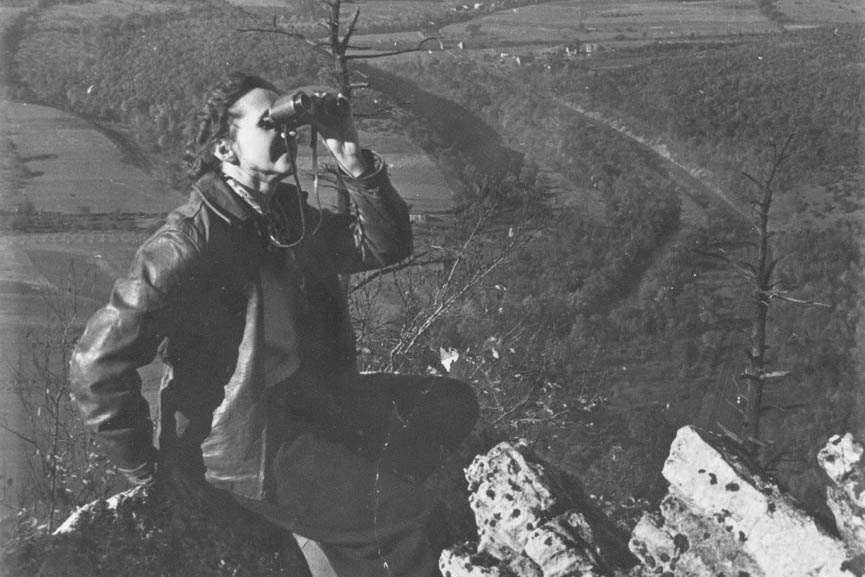Beloved Beasts
Science writer Michelle Nijhuis ’96 explores the fascinating history of the conservation movement.
In the zoo in my hometown, there were sign posts in front of some of the exhibits that read “Going . . . going . . . gone.” When I visited this zoo as a kid, our tour guide would explain that the animal species in these exhibits were threatened with extinction, and they would talk about what the zoo was doing to help. There were so many signs—it seemed that soon, only the prairie dog would be left. How strange, I remember thinking. Why would they lock up some of the few remaining animals of these species in cages in a medium-sized town in the desert Southwest?
Conservation is complicated.
In Beloved Beasts: Fighting for Life in an Age of Extinction, Michelle Nijhuis ’96 offers a history of biological conservation and traces the complexities of the field to its sometimes paradoxical beginnings. “To consumers of modern media, the story of species conservation doesn’t look much like a story,” she says in the book. “It looks like a jumble of tragedies and emergencies.” She wanted to offer something different. As a journalist who has reported on the conservation movement for the past couple decades, she saw a need for a critical history that would also show what has been achieved, without playing on the drama of tragedies and heroism that make for good headlines.
But Beloved Beasts is no dry chronicle. In Michelle’s hands, the story of the conservation movement unfolds through absorbing biographies of interesting, often flawed and contradictory people. There is the taxidermist, William Temple Hornaday, who went to great lengths to save the American bison, but only after killing two dozen of the perilously few remaining animals in 1886. Similarly, an ornithologist named Frank Chapman inspired generations of bird watchers, but also perhaps killed the last remaining American parrot—despite knowing the birds were near extinction. There’s also Rosalie Edge, a dauntless New York socialite who took on the Audubon Society and its stance on conservation, and went so far as to buy a popular seasonal hunting hilltop out from under Audubon in order to protect the eagles and hawks who fly over it. Hawk Mountain Sanctuary, as it is called, became the first sanctuary for birds of prey.
In an interview, I asked Michelle how she chose which stories to tell. “You could write thousands of books about the conservation movement and not include all the people who have been part of it,” she said. “It’s hard to have a small group represent the entirety of it. Some of the characters were obvious inclusions. Others I came to because I was looking to show a turning point in the history of the conservation movement.” She was pleased, for example, to include figures like Elinor Ostrom, a Nobel Prize–winning economist who tested and refuted the conventional wisdom that people are not capable of sharing common resources, a phenomenon known as “the tragedy of the commons.”
“Everyone should know about Elinor Ostrom. The principles she described underlie a lot of the comunity-based conservation underway today,” Michelle said.
Although the book is structured around biography, it brings in connections and contexts that reframe familiar narratives. For instance, William Hornaday’s story is not the tale of a trophy hunter who saves the American bison; it is a story about the emergence of the idea of extinction in the psyche of Western Europeans and white Americans, their anxiety about industrialization and immigration, and of the damage done to Indigenous Plains people to whom bison were vital. In this context, the story reveals the depths of irony in the early conservation efforts that Hornaday represents: his work to save the bison had nothing to do with its place in an ecological system, or people who depended on it, but rather, with the idea that white men could prove their mettle by hunting it.
Many of the influential conservationists in this book were also powerful writers. Rachel Carson’s Silent Spring led to the banning of DDT. Aldo Leopold’s Sand County Almanac is widely considered a foundational text of the ecological movement. “It became clear to me how important it is for scientists and conservationists of all kinds to be able to talk outside their specialty. To tell the story,” she says. “That ability can be as important as the knowledge itself. ”
Ultimately, Beloved Beasts is an argument that reckoning with the movement’s past is indispensable for its future. Throughout this critical history, Michelle highlights patterns of racism, elitism, and colonialist structures. “These are things that we hope the movement would overcome, and that have limited the success of the movement,” she says. “We must examine how we—people who care about species—continue to echo those patterns.”
By better understanding human diversity, she suggests, conservationists might no longer think of nature as something that must be protected from people, but rather seek to find better ways for humans to live alongside other species.
Tags: Alumni, Books, Film, Music, Climate, Sustainability, Environmental
